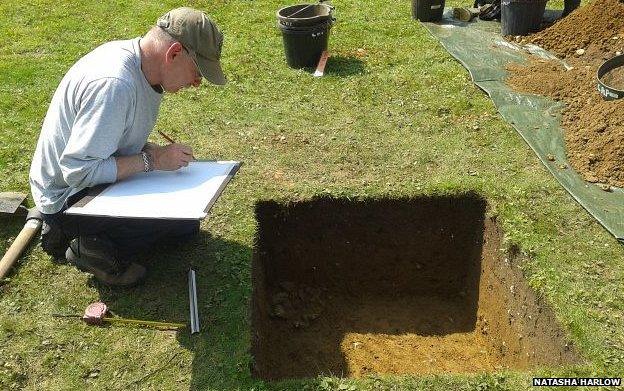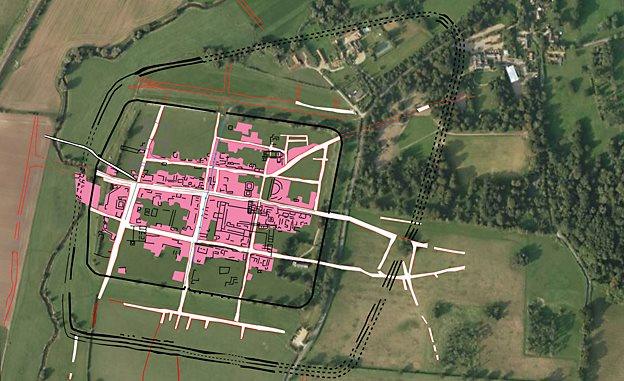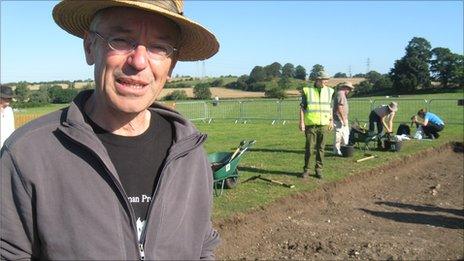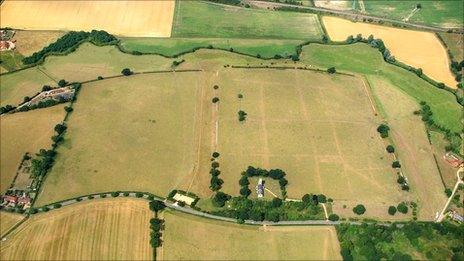Norfolk garden digs to reveal Caistor Roman secrets
- Published

Experts hope to find evidence of the Iceni or a Roman military camp that pre-dates the Norfolk town of Venta Icenorum
Villagers living in the shadow of a Roman settlement are set to discover new links to the past as archaeologists begin to dig up their gardens.
Evidence has revealed the town of Venta Icenorum, external at Caistor St Edmund, near Norwich, extends "substantially" beyond the current archaeological site.
Over the weekend, experts are digging test pits to determine the extent of Roman occupation in the area.
It is hoped the work will reveal more about life there before the Romans.
Dr Will Bowden, from the University of Nottingham, which is working with the Norfolk Archaeological Trust, has specialised in the site for the last eight years.

"We're reasonably confident the site runs substantially to the north of what we think of the archaeological site of Caistor," said Dr Will Bowden
He said: "Hopefully we'll get clues as to what was on the site before the Roman town was built.
"Our surveys have shown the defensive ditches, which appear in the shape of a kite, enclose a much larger area than is covered by the street grid of the Roman town.
"The ditches are quite early, earlier than some of the Roman streets, so it is possible that they reflect an early ambitious plan for the town that never worked out."

Archaeological evidence shows a "kite shaped" defensive ditch extends beyond the current Roman town. Crop-mark data is copyright of the English Heritage National Mapping Programme licensed to Norfolk County Council
Dr Bowden said the layout of ditches in the area suggested there was "something worth defending in that area".
The Romans abandoned Venta Icenorum in the early 5th Century.
About a dozen volunteers will be working on the dig funded by a £10,000 grant from the Heritage Lottery Fund.
The project will also examine the history of Caistor village to see how it developed after the Roman period until the present day.
"This is not just about the town but the whole landscape and getting people involved with archaeology by exploring what's underneath their house," said Dr Bowden.
- Published12 September 2012
.jpg)
- Published15 August 2011

- Published8 July 2011
